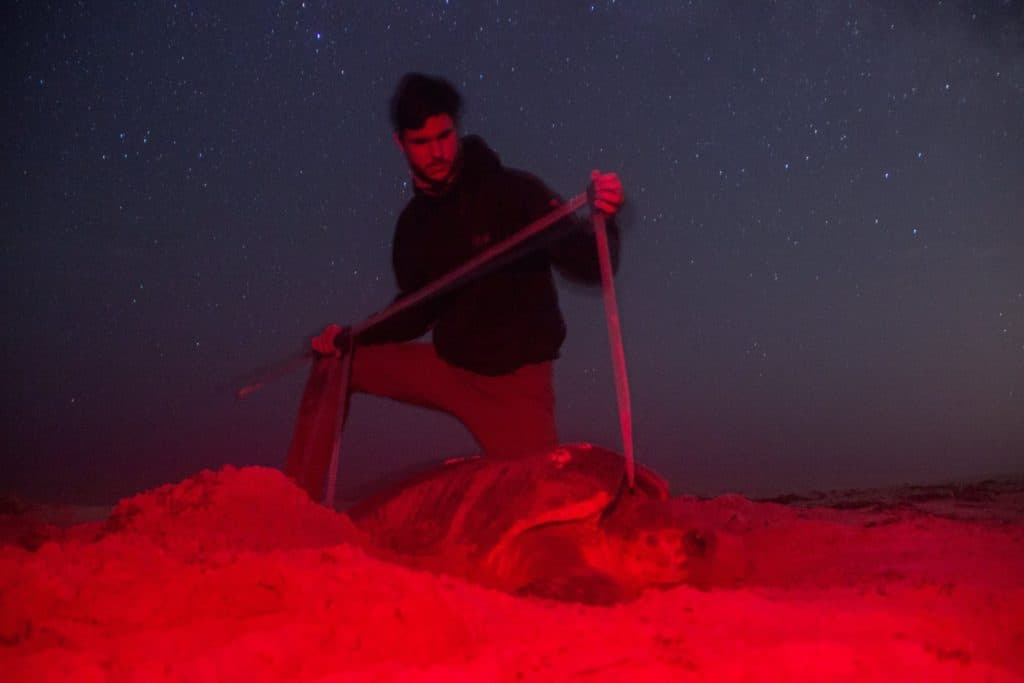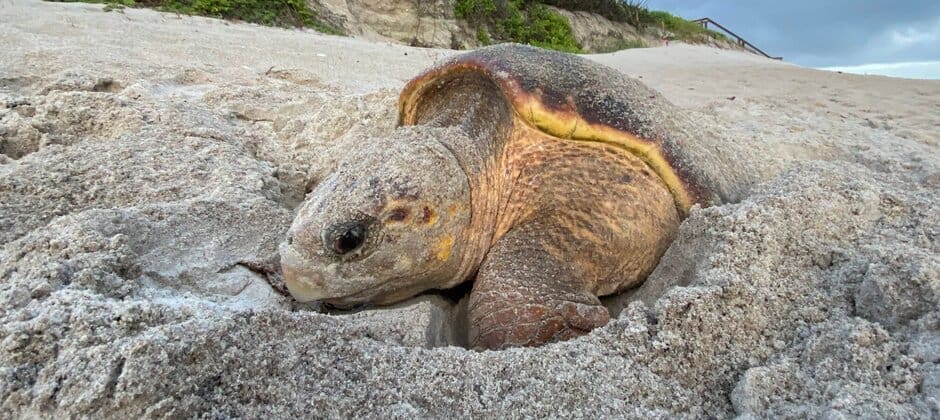Share this article
The average size of Central Florida’s sea turtles is shrinking. But why?
Green and loggerhead sea turtles that nest in central Florida are smaller overall on average than they were four decades ago. But researchers aren’t sure why.
Katrina Phillips, a PhD student at the University of Central Florida, and some of her colleagues began to suspect the change as they were measuring tagged sea turtles at the Archie Carr National Wildlife Refuge. The university has gathered data on turtles there since the 1970s. For Phillips’ team, that ongoing research provided a large dataset they could use to track turtle size over the decades.
Looking first at loggerheads (Caretta caretta), the most common species that nests there, and later at green turtles (Chelonia mydas), they found their inkling was right. “The turtles we are finding now are smaller than in the ’80s,” said Phillips, lead author on the study published in Ecosphere. The average size of nesting loggerheads decreased by about 1 inch, and the average size of nesting green turtles decreased by more than 1.5 inches since 1982, when researchers developed a standard protocol for gathering turtle data.
Team members aren’t sure why the turtles they’re measuring are smaller than their predecessors, but they have some theories. Maybe the turtles are migrating from different places, where turtles are smaller. Or, juveniles may be maturing at a smaller size, Phillips said, due to degraded resources or greater competition.

A researcher measures a loggerhead sea turtle. Credit: UCF Marine Turtle Research Group/Permit: FL MTP-171, 186
The study suggests conserving sea turtle resources in habitats like the Indian River Lagoon, a foraging area close to the study beach. “It has had some water quality issues lately,” Phillips said. “We need to do our best to keep water quality and sea grass in the lagoon habitat healthy to support juveniles and their growth rates.”
Regardless of the reason for the smaller turtles, the finding alone could have important ramifications for management and conservation efforts, Phillips said. Biologists use size to estimate the cutoff of whether sea turtles are mature or juvenile, and these smaller sizes are throwing off those estimates. “Measurements for that cutoff are too large,” she said. “They are likely including some mature turtles in what they are calling juveniles.”
But smaller turtles could affect population numbers, since female turtle size and clutch size go hand in hand. “Any change in their population like this is notable, so we are keeping an eye on it,” Phillips said.
Header Image:
Loggerhead turtles nesting in central Florida are smaller on average than they were in the past.
Credit: UCF Marine Turtle Research Group/Permit: FL MTP-186








